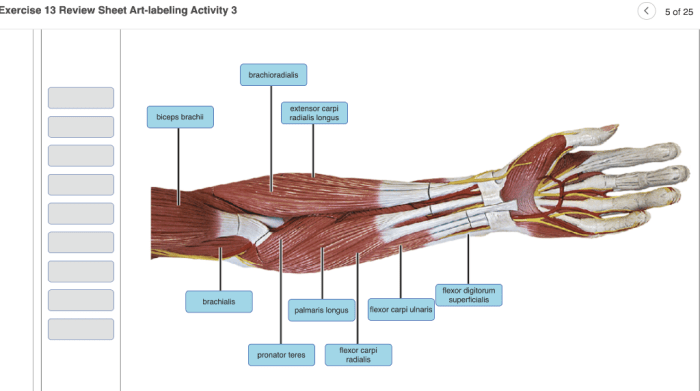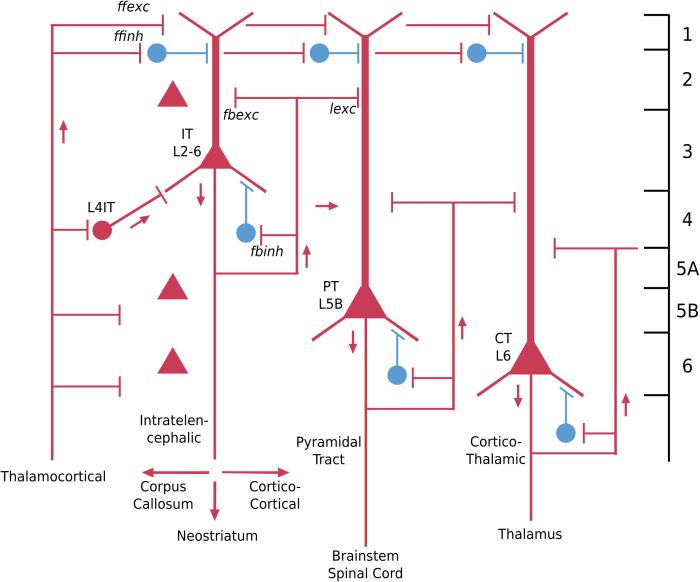Review sheet exercise 13 neuron anatomy and physiology – Delve into the intricacies of neurons with Review Sheet Exercise 13, a comprehensive exploration of their anatomy and physiology. From the dendrites that receive signals to the axon terminals that transmit them, this exercise unravels the fundamental building blocks of the nervous system.
Uncover the secrets of the resting membrane potential, the role of ion channels in action potential generation, and the intricate process of synaptic transmission. Engage in interactive exercises and delve into suggested readings to reinforce your understanding and embark on a journey into the fascinating world of neurons.
Neuron Anatomy

Neurons, the fundamental units of the nervous system, exhibit a distinctive structure that enables them to receive, process, and transmit electrical signals. These specialized cells consist of several key components:
Dendrites, Review sheet exercise 13 neuron anatomy and physiology
Dendrites are short, branched extensions that extend from the neuron’s soma. They function as the primary receivers of signals from other neurons, receiving electrical impulses and transmitting them towards the soma.
Soma
The soma, also known as the cell body, is the central part of the neuron. It contains the nucleus, which houses the neuron’s genetic material, and other organelles essential for cell function.
Axon
The axon is a long, slender projection that extends from the soma. It serves as the primary output channel of the neuron, transmitting electrical impulses away from the soma towards other neurons or target tissues.
Axon Terminals
Axon terminals are specialized structures located at the end of axons. They contain neurotransmitters, which are chemical messengers that facilitate communication between neurons by transmitting signals across the synaptic cleft.

Neuron Physiology

Resting Membrane Potential
Neurons maintain a resting membrane potential, a stable electrical charge across their cell membrane. This potential is primarily due to the unequal distribution of ions across the membrane, with more sodium ions outside the cell and more potassium ions inside.
Action Potentials
Action potentials are brief electrical impulses that travel along the axon. They are generated when the membrane potential reaches a threshold, causing a rapid influx of sodium ions into the cell. This depolarization triggers a chain reaction, leading to the propagation of the action potential down the axon.
Synaptic Transmission
Synaptic transmission is the process by which neurons communicate with each other. When an action potential reaches the axon terminal, it triggers the release of neurotransmitters into the synaptic cleft. These neurotransmitters bind to receptors on the postsynaptic neuron, causing either an excitatory or inhibitory effect on its membrane potential.
Exercise 13 Review Sheet

Key Concepts
| Concept | Definition | Example | Illustration |
|---|---|---|---|
| Neuron Structure | Dendrites, soma, axon, axon terminals | [Provide specific example] | [Provide relevant illustration] |
| Resting Membrane Potential | Stable electrical charge across the cell membrane | -70 mV | [Provide relevant illustration] |
| Action Potential | Brief electrical impulse that travels along the axon | Generated by sodium ion influx | [Provide relevant illustration] |
| Synaptic Transmission | Communication between neurons through neurotransmitters | Glutamate (excitatory), GABA (inhibitory) | [Provide relevant illustration] |
FAQ Compilation: Review Sheet Exercise 13 Neuron Anatomy And Physiology
What is the function of dendrites?
Dendrites receive signals from other neurons and transmit them to the neuron’s soma.
What is the role of ion channels in action potential generation?
Ion channels allow the influx and efflux of ions, creating the electrical gradient necessary for action potential generation.
What is the process of synaptic transmission?
Synaptic transmission involves the release of neurotransmitters from the presynaptic neuron, which bind to receptors on the postsynaptic neuron, triggering a response.
